Robert Mapplethorpe: From suburbia to subversive gay icon
- Published
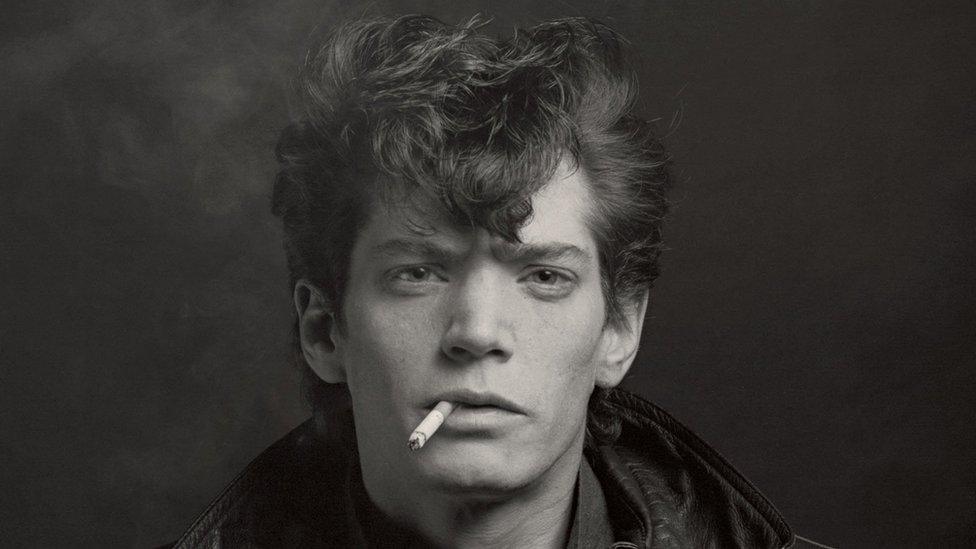
Robert Mapplethorpe, seen here in a self-portrait, became a controversial star of the art world
Thirty years ago the controversial American photographer Robert Mapplethorpe had a major exhibition at the Whitney Museum in Manhattan. It contained several of his trademark explicit shots of nudes - and it was confirmation that despite or because of the controversy, he'd become a star of the art world.
A few months later he was dead.
Mapplethorpe set out to shock America - yet his sister Nancy recalls a 'totally ordinary childhood' just outside New York.
Nancy Rooney has spent almost all her life on Long Island. As Nancy Mapplethorpe she grew up in Floral Park, the neighbourhood on the fringes of New York City which her parents moved to in 1949.
Nancy was the first of six children. "My brother Robert was only small when we moved to a brand new house on a brand new block. We did what young kids did in the early 50s: we jumped rope and played stickball and marbles. It was a totally ordinary childhood."
"Our father Harry was kind of strict and he worked as an engineer at Underwriters Laboratories in Brooklyn. Like clockwork he'd be home at six o'clock and we'd all sit down and have dinner together. It was the most normal and uneventful life you can imagine. It was a big treat when in the summer our grandmother took us on the train into Coney Island for the amusements there."

Mapplethorpe's sister, Nancy Rooney, says she lived an 'ordinary childhood' with her brother before he found the art-world
Nancy thinks in retrospect she and Robert were always closest.
"Robert was always teasing me and our brother Richard but he had a great sense of humour. You could see he was intelligent."
When he left school, Robert told his parents he wanted to study art.
"'I remember our father saying: 'What's the use of that? One day you'll need a career and maybe need to support a family and art won't help one bit.'"
Eventually Harry agreed to support his son if he studied art at the Pratt Institute in Brooklyn, where he'd taken his own degree in engineering.
Nancy remembers: "After a year, Robert went to live near the college and that's when his ties to the family changed."

You may also like

When Robert first went to Pratt he was a short-haired member of the Reserve Officers Training Corps. But in an era of rapid social change, Robert was turning to alternative culture. Drugs became part of his life. A turning point was meeting writer and performer Patti Smith in 1967. They lived together for five years.
"Once in a while Robert and Patti would take the train out from the city and come to see my parents. I remember my father would be embarrassed because Robert would be dressed all in black and Patti - who was always lovely - would be dressed in ways you wouldn't see in Floral Park.
"Patti explained she was a poet and she even wrote a little poem for my mom - I wish I still had it. Robert brought her to my sister's wedding in 1970 and I remember Patti saying: 'Well, our life in the city is different to yours and you wouldn't understand.' But there wasn't anything nasty in that. Patti was just telling the truth."
At one point the family were told Robert and Patti had married. "My mom would send her anniversary presents addressed to Patti Mapplethorpe. But my father pointed out there were no pictures of the ceremony and that we'd seen no marriage license. Of course it had never happened."
By the 1970s, Robert had realised he was gay. It was then, too, that finally he took up the medium which would make him famous.
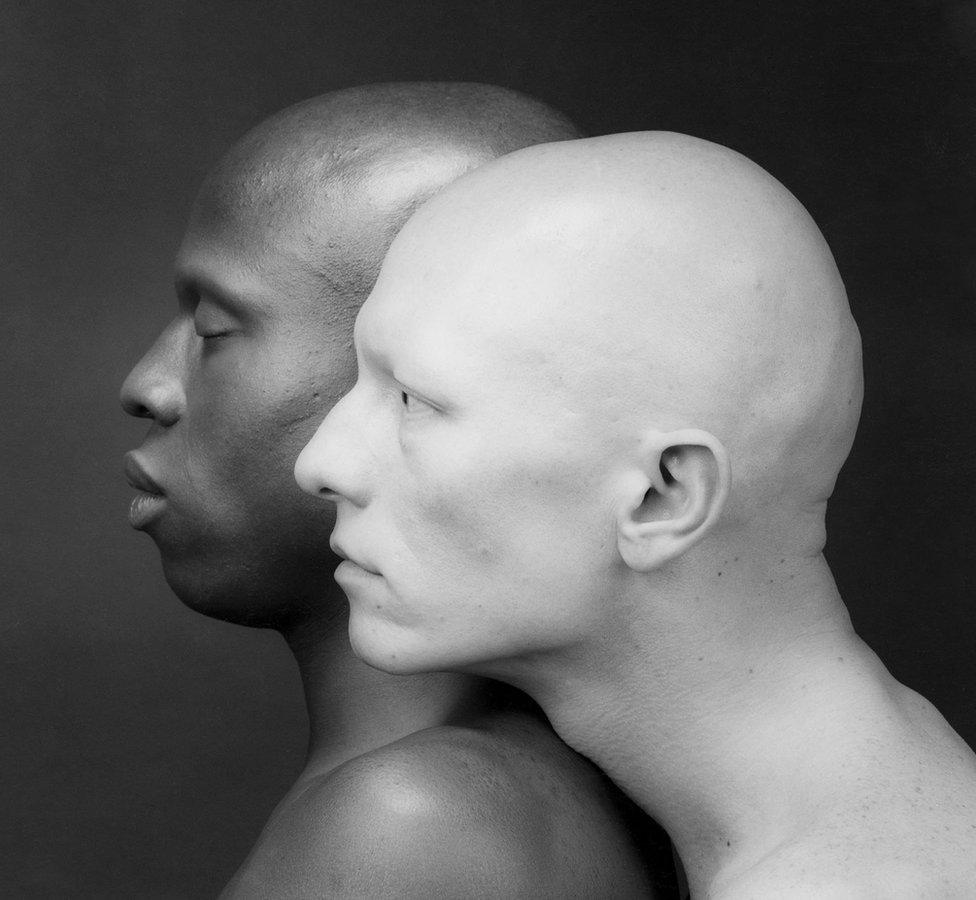
Mapplethorpe's photography came to reflect his own sexuality
His detractors said his photographs of the male nude - many of them highly explicit - had offered an easy path to celebrity. He favoured the black male physique above all: some thought his work proficient but exploitative.
His admirers pointed out that he produced memorable images of women and flowers, too. By the 1980s his work was selling for high prices. Robert had discovered the usefulness of public outrage.
Yet Nancy, to whom he had been so close, knew little of the world Robert had entered.
"The first time I realised my little brother was becoming well-known was when I was in a waiting room in a dentist's office with my son. There was a small piece about him in a magazine.
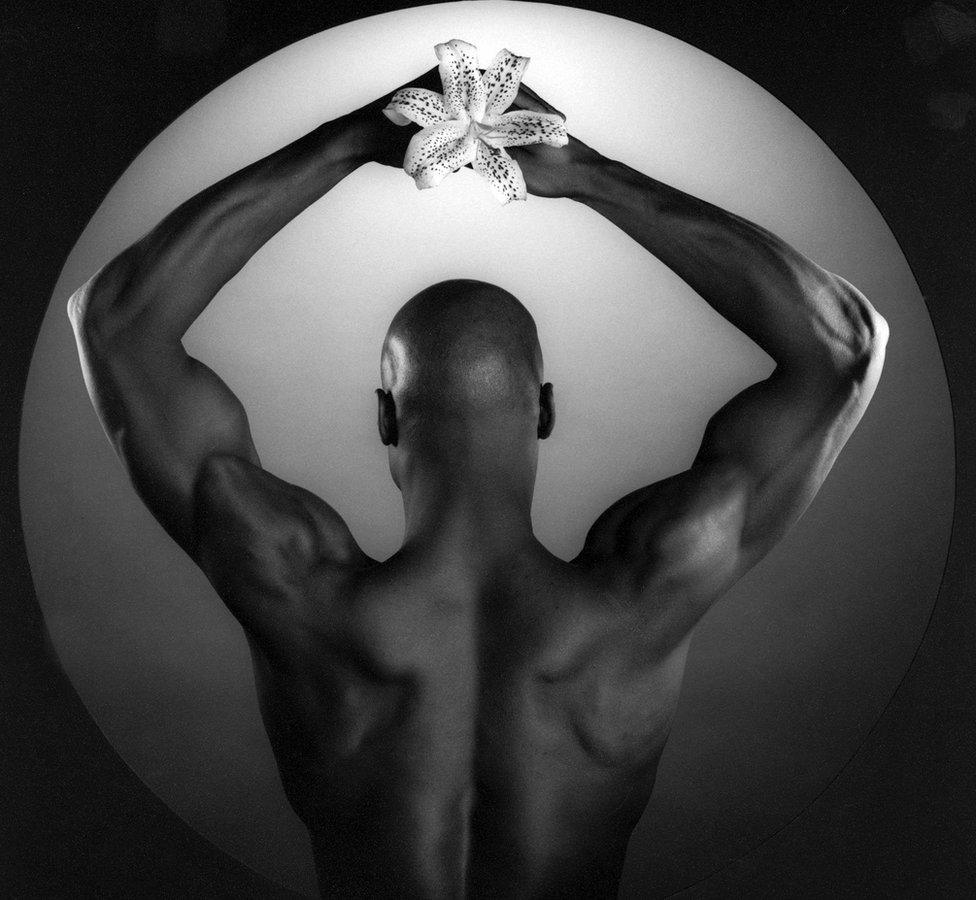
Mapplethorpe's celebration of black male sexuality was deemed exploitative by some
"My big worry was always that he was taking drugs. People say to me you must have known Robert was gay but honestly I didn't think one bit about that - it was the drugs I thought about."
Today it would be easy to find an artist's work online. But Nancy didn't move in artistic circles and there was no internet. So it was only towards the end of Robert's life she saw his pictures at all.
"By then we knew that Robert was sick with Aids. That was when finally we reconnected. He invited me into the city to go to his loft downtown, which I and my parents had never been to. It was a beautiful loft filled with artwork and vases.
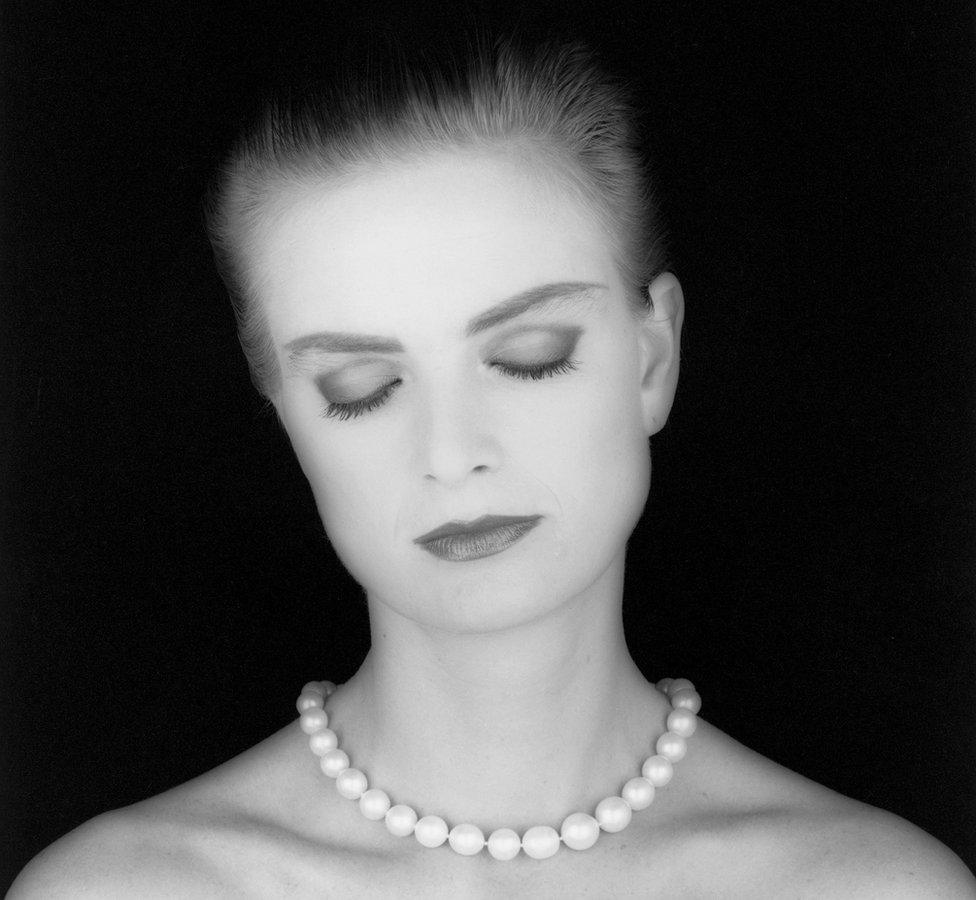
Mapplethorpe also shot women, including this portrait of the "punk" princess, Gloria von Thurn and Taxis
"And it was only then I said to him: 'Robert, are you gay?' And he said: 'Yeah Nan, I am.' And I said: 'Because I was never really sure.'"
Nancy says that was the point she began to know her brother. "But it was at the end of his life and he was sick and I felt so bad. I feel bad when I think about it now."
Soon after that, in July 1988, the retrospective at the Whitney Museum of American Art opened to acclaim. For all Robert's clearly failing health, Nancy enjoyed the evening.
"I saw what a success he was - though the people surrounding Robert were a bit different from our Long Island upbringing. Some of his photographs did shock me. Self-Portrait with Whip is well-known now but it was a few moments before I even realised it was Robert staring out at me with a whip in his butt. But I was so glad I attended that night."
Robert sadly died of Aids in March 1989, aged 42.
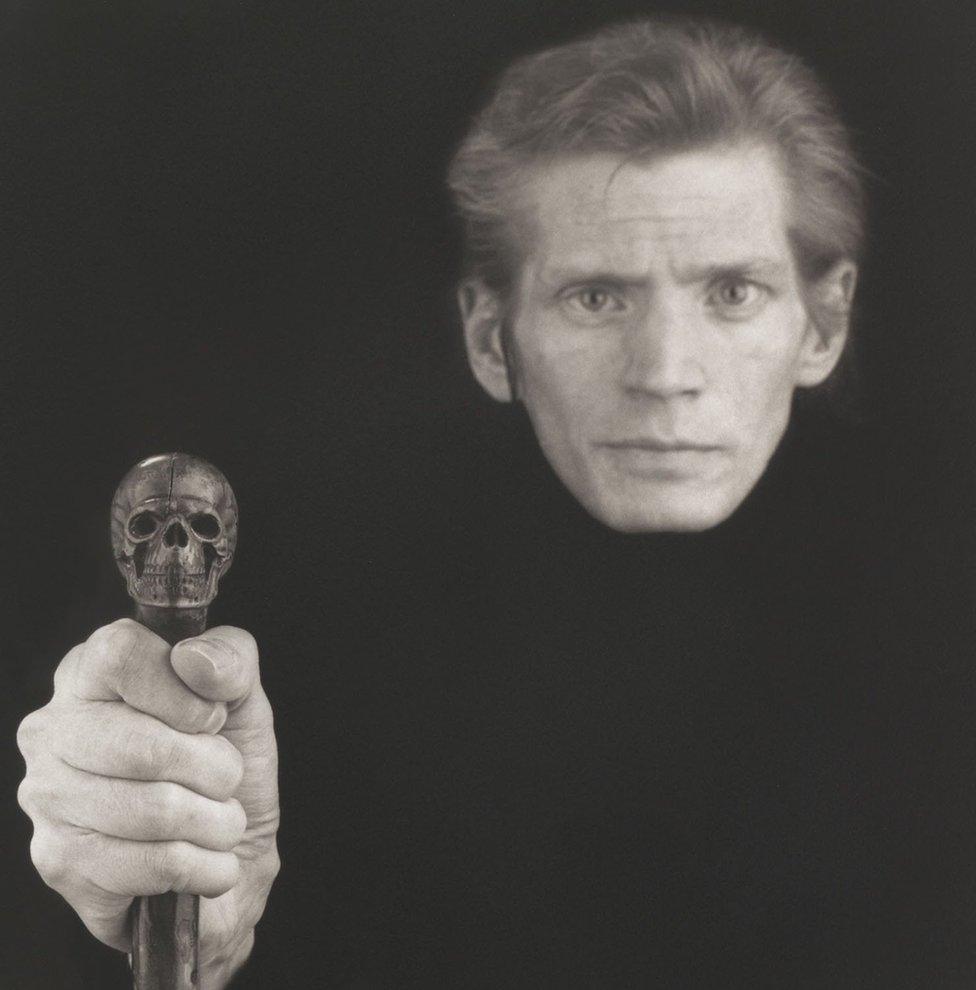
A latter-day self-portrait of Mapplethorpe aged 42, a year before his death from Aids in 1989
Two years ago the documentary Mapplethorpe: Look at the Pictures brought Robert's work to a new generation - one which can find images online far more explicit than anything he created. Ondi Timoner's biopic, starring Matt Smith, is awaiting release.
Nancy is delighted that people are still interested in her brother.
"Robert's well-known all over the world, which when we were kids in the 1950s I couldn't possibly have imagined. Even after 30 years I still miss him but I always think of him with so much pride."

Follow us on Facebook, external, on Twitter @BBCNewsEnts, external, or on Instagram at bbcnewsents, external. If you have a story suggestion email entertainment.news@bbc.co.uk, external.
- Published26 January 2016
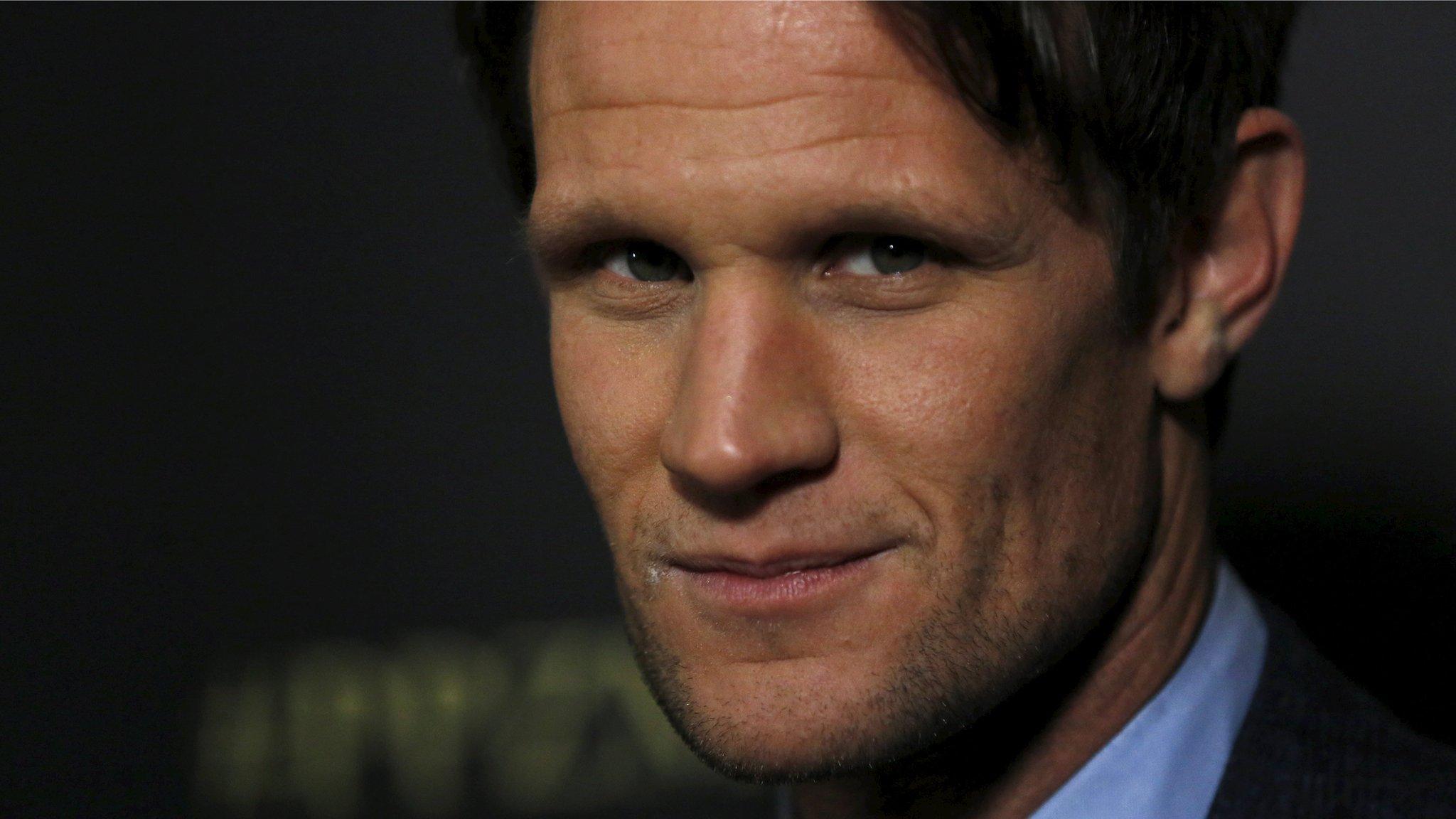
- Published18 November 2010
- Published18 July 2017
